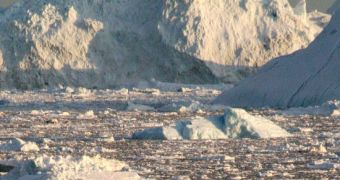Following their analyzing data concerning Greenland's documented glaciers and ice caps, as well as using lasers in order to pin down the melting patterns of these blocks of ice, a team of researchers has reached the conclusion that isolated glaciers in this part of the world are currently melting about 2.5 times faster than the main ice sheet.
Despite the fact that such so-called peripheral glaciers only make up about 5-7% of Greenland, their losing ice at such a fast pace has scientists worried about their potential contribution to a global rise in sea levels.
Thus, it is being said that, all things considered, 20% of the sea level rise caused by Greenland's slowly melting is a direct result of these isolated glaciers' responding to the new environmental circumstances they find themselves in.
Our Amazing Planet quotes Tobias Bolch, a scientist currently working with the University of Zurich in Switzerland, who commented with respect to the behavior of these peripheral glaciers as follows:
“The ice loss with respect to area is significantly higher than of the ice sheet. This means that the local glaciers react faster with respect to climate change.”
“This information will help to improve the predictions of the future contribution of Greenland's ice to sea-level rise,” Tobias Bolch argued.
The same source informs us that, should the isolated glaciers floating about in Greenland be put together, their overall area would significantly exceed that of the ice cover in the European Alps. More precisely, it would be about 50 times bigger.
Because of this, the researchers wish to stress the fact that these glaciers have to be kept a close eye on.
As Tobies Bolch puts it, “The area of those glaciers is about 50 times higher than the ice cover of the European Alps. Consequently, it is important to investigate not only the ice sheet, but also these local glaciers.”
The findings of this investigation into how climate change is affecting Greenland’s isolated glaciers were published in the scientific journal Geophysical Research Letters.

 14 DAY TRIAL //
14 DAY TRIAL //